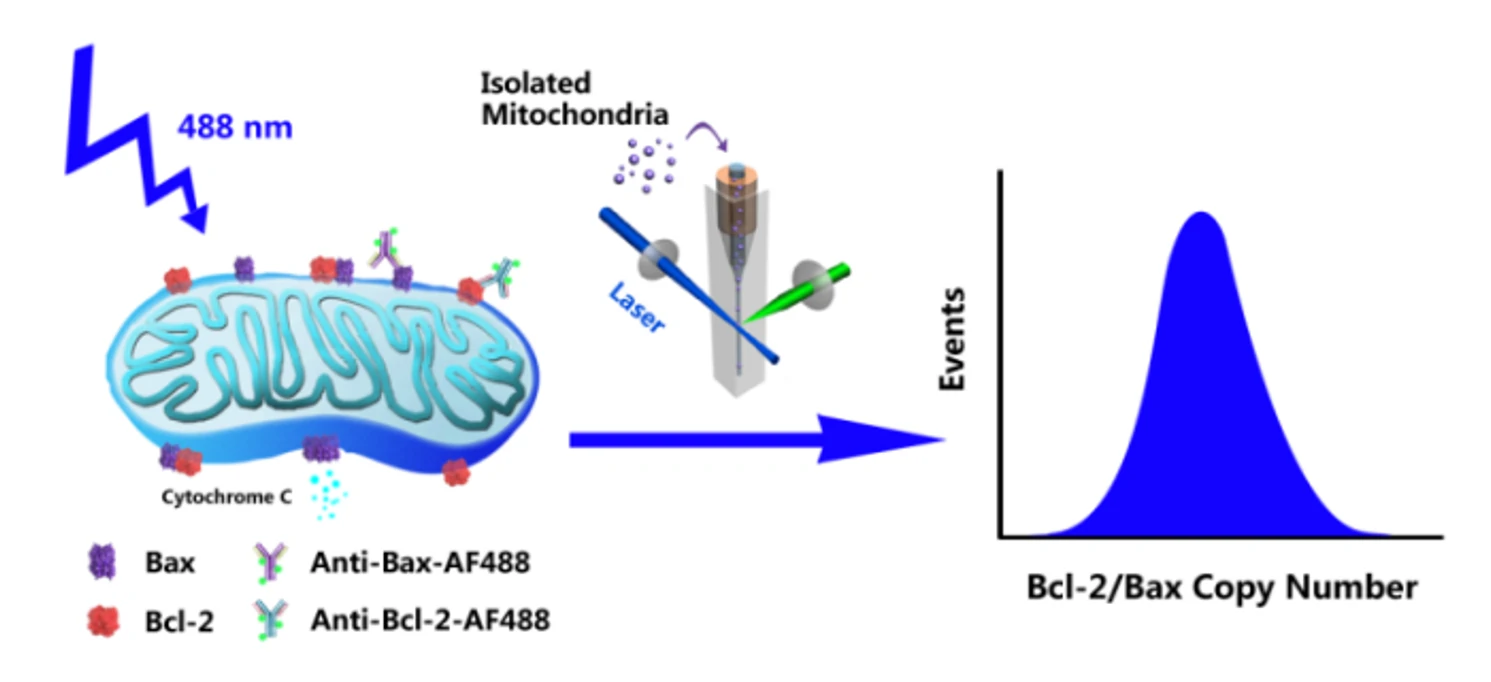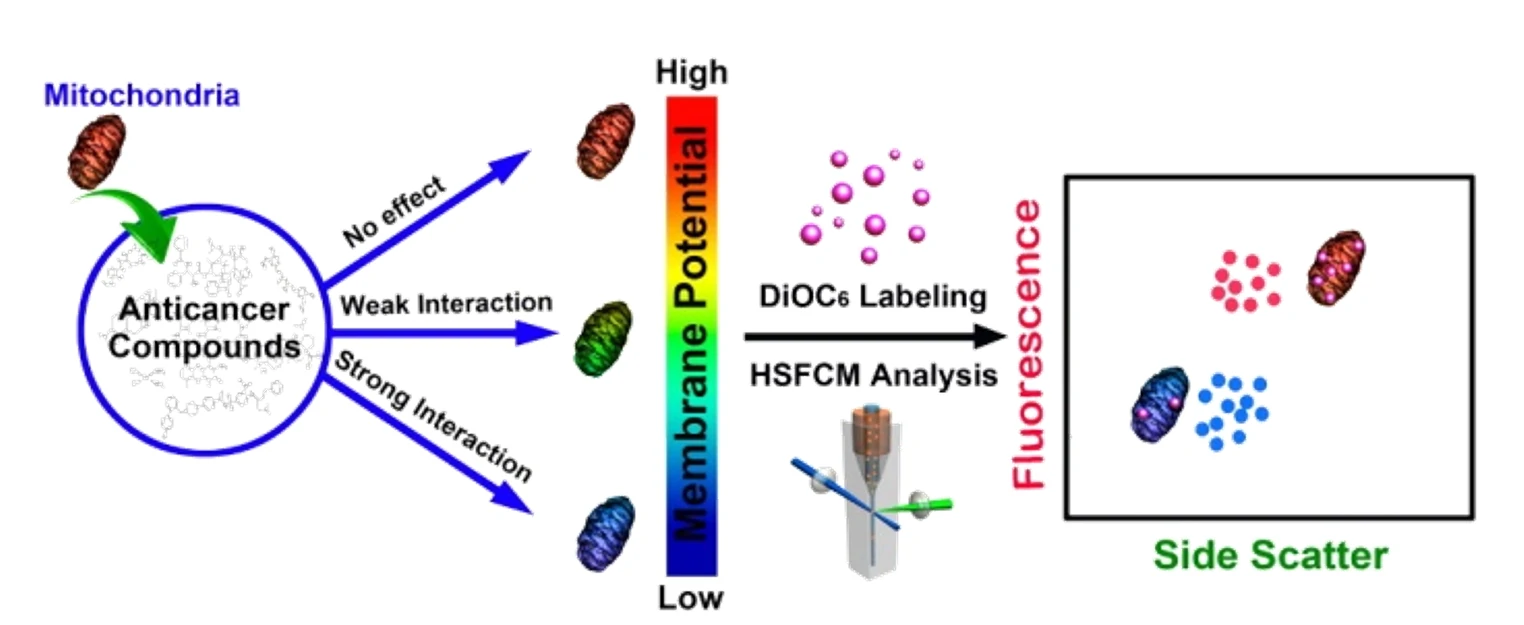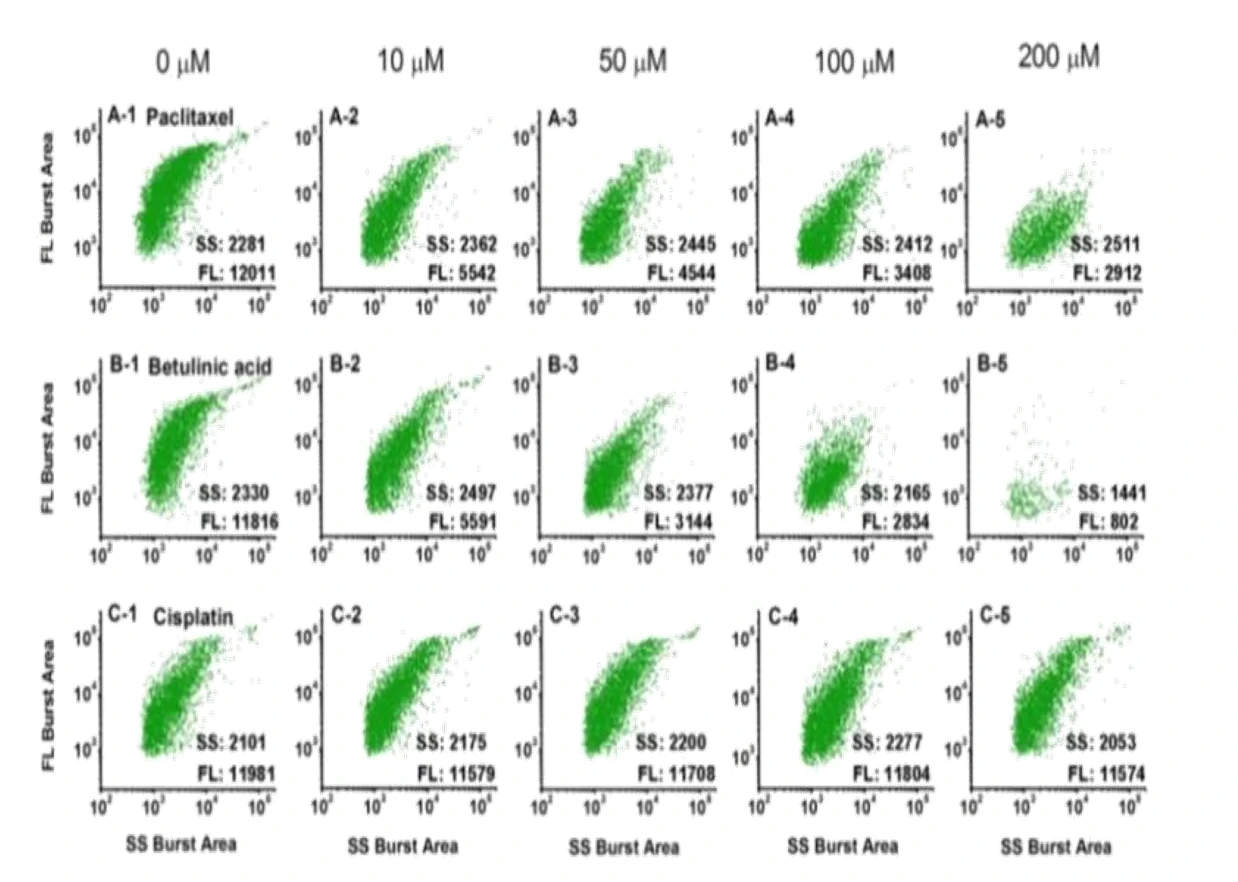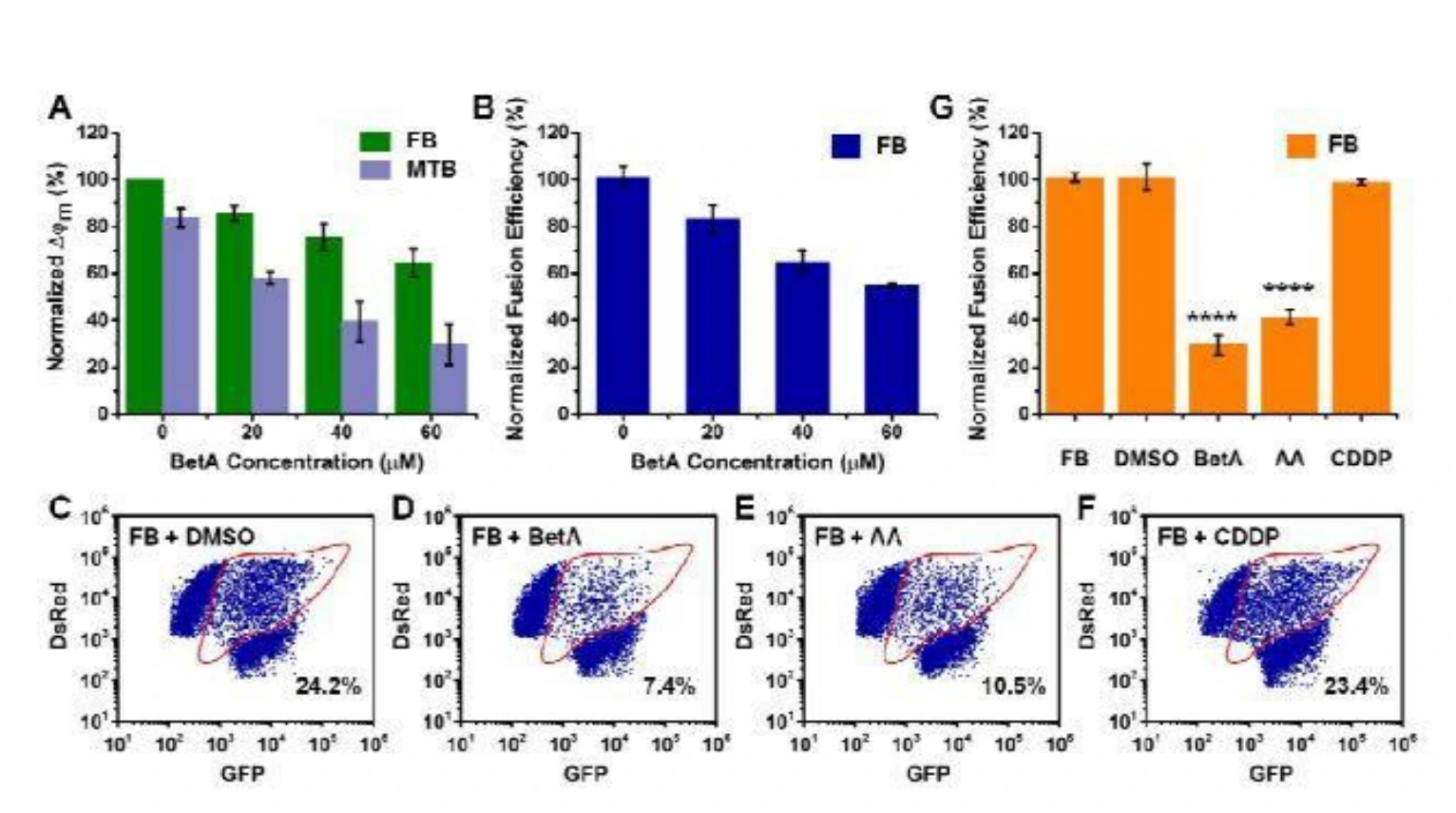Estimation of Purity and Structural Integrity of Single Mitochondria
Mitochondria play a central role in the regulation of energy metabolism and signal transduction in eukaryotic cells. Mitochondrial dynamics actively contribute to various cellular activities, such as mitophagy, apoptosis, and natural immunity. Mitochondrial dysfunction may lead to several human diseases, including neurodegenerative diseases and metabolic disturbances. Therefore, the study of mitochondria is of great significance for the development of basic life science. However, conventional flow cytometric analysis of individual mitochondria has been limited to attributes that utilize fluorescence staining.
Here, the Flow NanoAnalyzer is applied for the high-throughput multiparameter analysis of individual mitochondria. By simultaneous labeling of mitochondrial cardiolipin (inner membrane) and mtDNA (matrix) with NAO and SYTO 62, respectively, the Flow NanoAnalyzer demonstrates the assessment of the purity and structural integrity of individual mitochondria. By simultaneous labeling of porin and cytochrome C proteins, the functional integrity of individual mitochondria can be characterized.
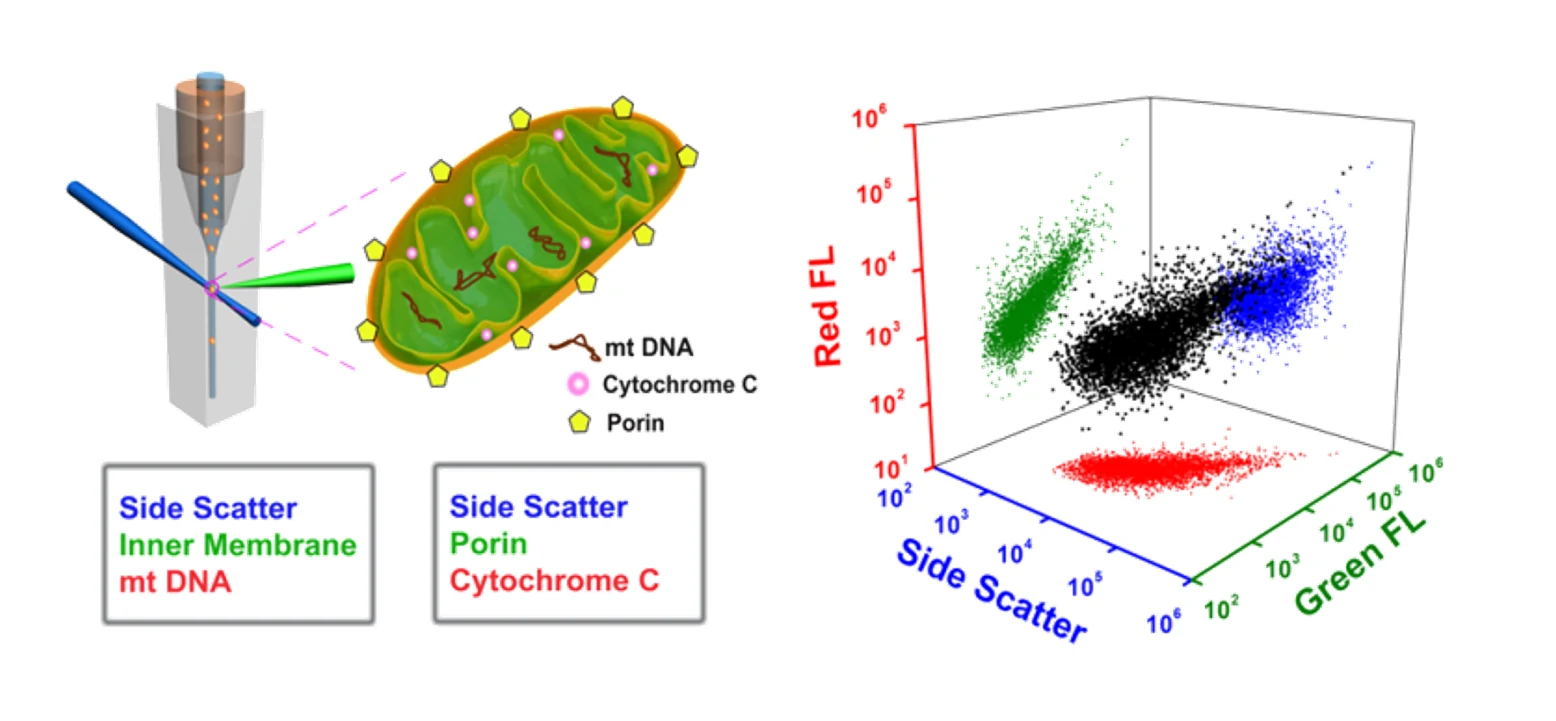
The Flow NanoAnalyzer can characterize the functional integrity of individual mitochondria via simultaneous detection of side scatter, porin (outer membrane) and cytochrome C (intermembrane space) proteins.
Anal. Chem., 2012, 84(15), 6421-6428.




